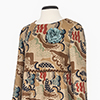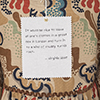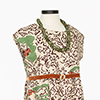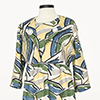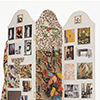“Something Betwixt and Between” — Matisse & Bloomsbury
Click on images to view project. |
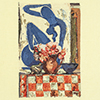 |
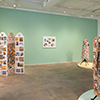 |
|||||||
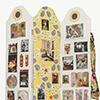 |
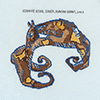 |
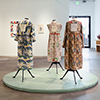 |
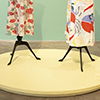 |
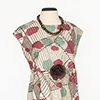 |
||||
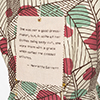 |
 |
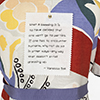 |
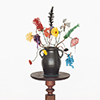 |
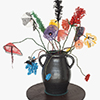 |
||||
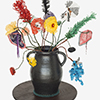 |
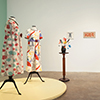 |
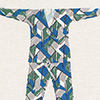 |
 |
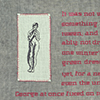 |
||||
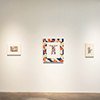 |
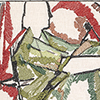 |
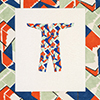 |
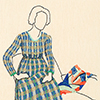 |
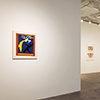 |
||||
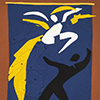 |
 |
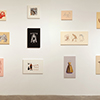 |
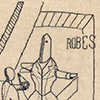 |
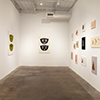 |
||||
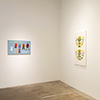 |
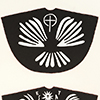 |
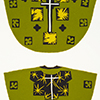 |
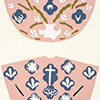 |
 |
||||
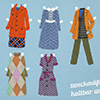 |
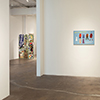 |
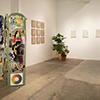 |
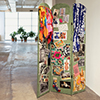 |
 |
||||
 |
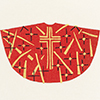 |
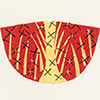 |
||||||
“Something Betwixt and Between” — Matisse & Bloomsbury “Something Betwixt and Between” focuses on the fluid relationship between painting and textiles in the work of Henri Matisse and the Bloomsbury Group artists Vanessa Bell, Duncan Grant, and Roger Fry. The exhibition is staged as a conversation among multiple images, motifs, and mediums that Reichek has sampled, translated, and reconfigured into alternative forms, as a way of thinking fluently across categories of art and craft in both material and conceptual terms. “Something Betwixt and Between” is grounded in Reichek’s fascination with historical artistic practices that cross traditional genre boundaries. Henri Matisse’s lifelong passion for textiles was channeled into a substantial collection of fabrics, costumes, and scraps that he called his “working library,” a deep well for his imagination. And though Matisse profoundly influenced the Bloomsbury artists, their own short-lived collaborative design firm, Omega Workshops (1913–19), actually anticipates his earliest commercial projects by nearly two decades. Meanwhile, even as Duncan Grant and Vanessa Bell pursued design work well into the 1930s, the ultimate homebase for their artistic collaborations and alternative lifestyles was Charleston, Bell’s farmhouse in Sussex. To unpack her research in a visual form, Reichek has assembled two folding screens — one for Matisse, the other for Charleston and Omega — each of which serves as an associative compendium of images and materials, in much the same spirit as art historian Aby Warburg’s Mnemosyne Atlas. Here, however, the choice of folding screens is historically specific — screens recur in Matisse’s paintings as a standard part of his studio furnishings, and Bell and Grant actually designed several multi-panel screens, both as prototypes for fabrication and as unique works of art. Screen Time with Matisse (2022–24) combines vintage textiles, archival images printed on fabric, and Matissean décor-merch in a free mashup that evokes the eclecticism of his taste and probes the limits of what we would now call his “brand.” Reichek also acknowledges the politically less attractive aspects of Matisse’s practice, including his primitivizing gaze and ambiguous relationships with female models and collaborators. Screen Time’s deliberate informality contrasts with the gridded arrangements of A Charleston/Omega Screen Atlas (2024), which juxtapose paintings with designs, portraits with snapshots, and archival with contemporary interior photographs, several of which were taken by or feature Reichek on her own visits to Charleston in 2022 and 2024. On each side of this screen, the central panel is upholstered with reproduction furnishing fabrics that were originally designed by Grant in the 1930s and are now retailed by The Charleston Trust. Reichek has used five of these Charleston Trust fabrics by Grant and Bell to make “Omega dresses,” designed in the high-waisted, corset-free style that Bell herself favored, which are modeled on freestanding dress forms. Pinned to the back of each dress is a linen tag, hand-embroidered with a quote by Bell or her sister, Virginia Woolf, on the pressures of dressing for society, or a recollection of Bell’s homemade dressmaking by her daughter or granddaughter. Reinforcing these links between dressmaking and the body is a hand embroidery on green linen entitled It Was Not Velvet (Virginia Woolf) (2024), with a quote from Woolf’s posthumously published autobiographical piece “A Sketch of the Past,” to which is appliquéd a hand-sewn nude female figure by Bell. This associative method of quoting and remaking continues with other hand and digital embroideries. On the long wall of the gallery — painted a soft green like the interior at Monk’s House, the Sussex home of Virginia and Leonard Woolf — hangs A Charleston Sampler (2023–24), featuring seven needlepoint designs from seat covers, cushions, rugs, and other objects, here hand-embroidered with captions. Two small digital embroideries remake the front and back cut-out collage designs for a red chasuble (a sleeveless vestment worn by a priest) that Matisse conceived for the Chapelle du Rosaire in Vence. Another digital embroidery samples the textile pattern in Matisse’s 1926 painting Lemons on a Pewter Plate, while Duncan Grant's Matisse (Digital Version) joins several conceptual and historical strands into a single focus. On opposite sides of the gallery are a mismatched pair of digital embroideries featuring a set of pajamas that Bell designed for Fry with her fractured pattern “Maud,” but here rendered in two different historical colorways — the smaller in gray/green/blue, the larger in red/green/blue, framed by an actual sample of its corresponding Charleston reproduction fabric. Omega dresses also appear in two 2023 digital embroideries, Nina Hamnett by Roger Fry and Vanessa Bell's Figure and Tent. Rounding out the exhibition are a number of other works that quote and translate Matisse. Two nine-part digital embroideries from 2006–07 reimagine his cut-out collages as pinked “swatches” from the commercial textile market, and three hand embroideries feature his notated sketches for tapestry designs, recreated entirely in thread. Cut-out chasuble designs also reappear in the small side gallery, this time realized in colored felt, collaged and appliquéd to white felt, with both sides of the chasuble design stacked vertically within a single large-format panel. For Reichek, felt represents a quintessential “craft” medium, even as it conceptually returns Matisse’s collaged-paper designs back to the materiality of textiles. Also in this gallery are digital and hand embroideries that feature images of clothing drawn from other historical, modern, and contemporary paintings and designs. Closing on an ironic note, offering an alternative vision of modernist utopian dress, a large digital embroidery on cotton canvas quotes a postcard souvenir evoking 1960s East Berlin: “Happy and Well Dressed (Paper Dolls) (2024). |

